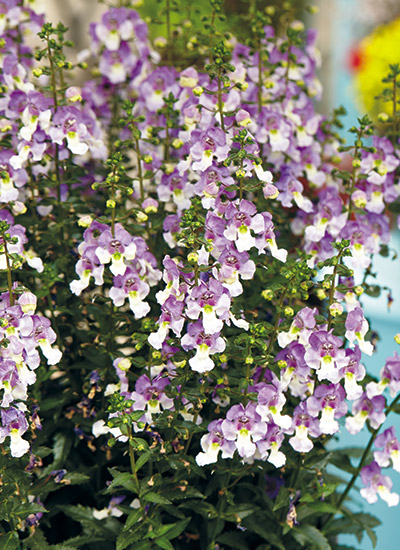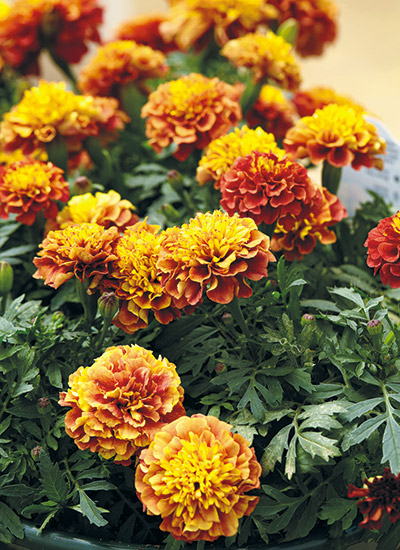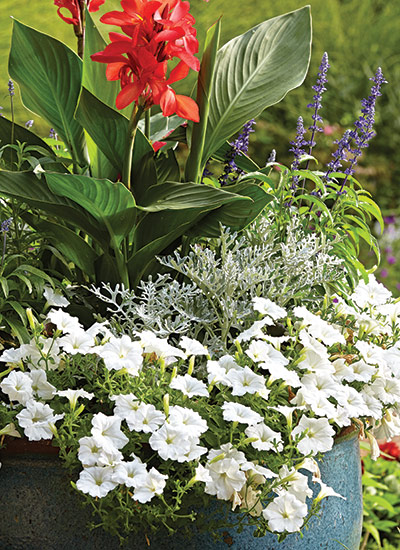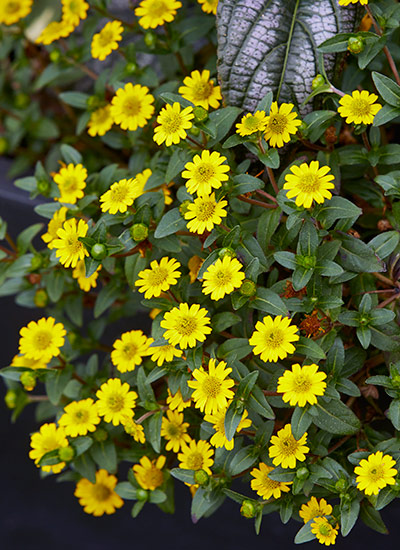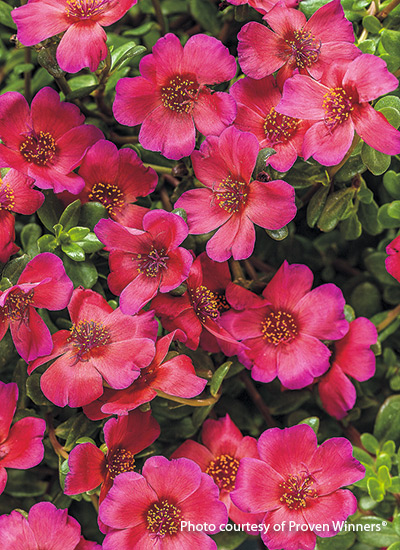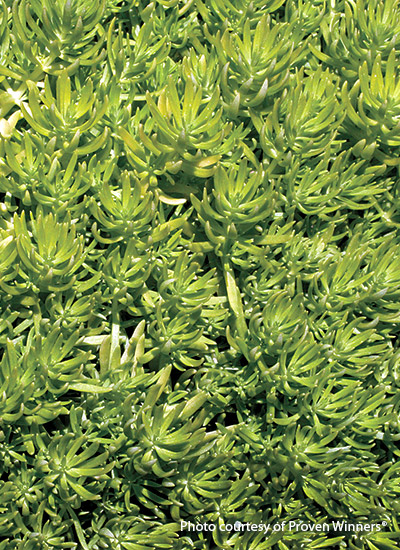Beat the summer heat
When summer temperatures soar, plants may stop blooming, wilt, drop leaves and flowers, lose color or launch into seed production. Learn how you can help prevent heat from taking its toll on your garden, and meet 6 flowers that can take the heat.
You Might Also Like:
10 Drought-Tolerant Plants
Plants for a Gravel Garden
DIY Rain Barrel
Low-Maintenance Garden Bed Plan

Cooling solutions for hot days
When the temperatures soar, help your plants weather the heat.
Add mulch
The old saying about keeping a cool head in hot situations is just the opposite for plants, who would rather have cool roots, especially on hot days. A 2- to 3-in. layer of mulch helps soil moisture and temperatures remain cool, calm, and collected. Keep in mind that dark mulches, such as dyed black wood chips and black lava rock absorb (and retain) more heat. Light-colored mulches, such as shredded cedar bark and dried grass clippings, reflect heat and help soil stay cooler.
Water right
Offer bedded annual plants at least an inch of water a week. Containers need more, because they are above ground and more susceptible to drying winds. Use a drip system or soaker hoses for consistent (and easy!) watering. You can even use drips in containers. Hook everything up to a timer, so that watering is automatic and effortless. Water in the early morning for less evaporation.
Provide shade
Adding shade-producing trees, shrubs or structures to your landscape helps lower surface temperatures and reduces heat in your yard. Shaded surfaces can be up to 20 to 45 degrees F cooler than unshaded materials in the same area. In midsummer, when the sun is most intense, coleus (Plectranthus hybrids) and sweet potato vine (Ipomoea batatas) may wilt; but you can offer relief in especially hot spots in your yard by adding temporary fabric row covers or shades. UV-stabilized, polyethylene shade net reduces effects of summer sun yet allows air flow. Planting heat-susceptible plants on the north or northeast side of a taller, more heat-tolerant plants, such as Mexican sunflower (Tithonia rotundifolia) or zinnia (Zinnia elegans), can give a little shade during the hottest part of the day.
You Might Also Like:
Different Types of Garden Hoses
Hanging Basket Watering Tips
Dividing Plants in Summer
How heat and drought affect plants
Some plants are naturally more resistant to heat, humidity and drought than others and these flowers can take heat better. For example, species that are native to hot, dry climates have developed a number of tricks that allow them to survive the blazing heat, such as thick cuticles (think cacti) or waxier leaf surfaces (think agaves) that result in lower transpiration rates. Other plants minimize water loss through transpiration by having smaller leaves, leaves covered with fine hairs or by developing wider or deeper root systems. Transpiration is essentially how plants sweat; their pores, through which hydration is lost, are called stomata. When plants lose water, they wilt.
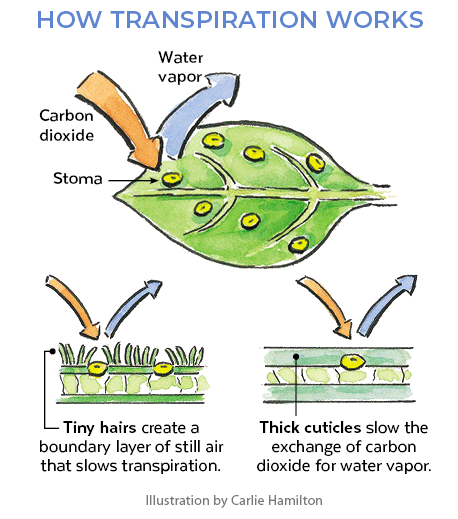
How transpiration works
During transpiration, moisture is absorbed through the roots, carries nutrients up through the plant and exits through the stomata when they exchange carbon dioxide from the air for water vapor. When too much moisture leaves, plants wilt. Some plants have characteristics to slow this process as mentioned above.
6 Summer flowers that can take the heat
Here are 6 flowers that are well-adapted to heat and drought. They’ll keep blooming and look good even when other plants struggle.




